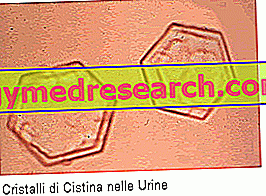SALICINE ® is a drug based on acetylsalicylic acid + ascorbic acid
THERAPEUTIC GROUP: Analgesics and antipyretics: salicylic acid and derivatives
IndicationsAction mechanismStudies and clinical effectiveness Usage and dosage instructionsWarnings Pregnancy and lactationInteractionsContraindicationsUndesirable effects
Indications SALICINE ® Acetylsalicylic acid + Ascorbic acid
SALICINE ® is indicated in the symptomatic treatment of febrile and painful states on an inflammatory basis.
Mechanism of action SALICINE ® Acetylsalicylic acid + Ascorbic acid
SALICINE ® is a medicine successfully used in the symptomatic therapy of febrile and painful states, thanks to the presence of two fundamental active ingredients in the management of inflammatory states, such as acetylsalicylic acid and ascorbic acid.
Acetylsalicylic acid, an active ingredient included in the category of non-steroidal anti-inflammatory drugs, thanks to its ability to inhibit the activity of cyclooxygenases, enzymes commonly expressed during inflammatory processes of various kinds and capable of inducing the synthesis of mediators with vasopermeabilization activity, vasodilator and chemotactic, is able to carry out an anti-inflammatory, antipyretic action, linked to the inhibition of prostaglandin stimulation on the hypothalamus, and analgesic, attributed to the ability to block the generation of the painful peripheral impulse through the inhibition of the synthesis of mediators of ache.
Ascorbic acid, also known as vitamin C, through its antioxidant activity is instead able to protect the cell from oxidative damage induced by reactive oxygen species, to contribute to the structural maintenance of tissues, reducing their typical degeneration during local inflammatory processes, and support the specific immune system during viral infections.
Studies carried out and clinical efficacy
1.VITAMIN EC ASCORBIC ACID: efficacy and safety
Pain Pract. 2011 Dec 7.
Interesting work that demonstrates how the combination of ascorbic acid and acetylsalicylic acid can not only improve the protective effect of the medicine but also optimize the absorption and intestinal tolerability of ASA
2 .VITAMIN C + ASCORBIC ACID AND URIC ACID
J Rheumatol. 2008 Sep; 35 (9): 1853-8. Epub 2008 May 1.
It is known that acetylsalicylic acid, when taken at modest quantities, exhibits a sensitive uricosuric action which according to this study is further enhanced by the concomitant intake of vitamin C. This would also result in a preventive action against future inflammatory attacks.
3. VITAMIN C IN THE PREVENTION OF DAMAGE TO MUCOSA
Int Immunopharmacol. 2008 Dec 20; 8 (13-14): 1721-7. Epub 2008 Sep 4.
Study that shows how the combined intake of vitamin C and ascorbic acid can be associated with a lower risk of mucosal damage, thanks to the antioxidant and immunomodulatory action of vitamin C.
Method of use and dosage
SALICINA ®
Effervescent tablets of 400 mg of acetyl salicylic acid and 240 mg of ascorbic acid.
The dosing schedule useful in the symptomatic therapy of febrile states involves the intake of 1-2 tablets for two - three times a day, while for the treatment of painful states on a rheumatic and muscular basis the intake of 1 tablet every 4 - 6 hours .
The correct method of use involves taking SALICINE ® on a full stomach, dissolving the effervescent tablet in a glass of water.
Warnings SALICINE ® Acetylsalicylic acid + Ascorbic acid
Although SALICINA ® can be sold without a prescription, it would be advisable to consult your doctor before taking this medicine.
In order to reduce the incidence of adverse reactions it is recommended to take SALICINE ® on a full stomach and in the lowest possible doses, however, able to carry out the desired therapeutic effect.
Particular caution is required for elderly patients suffering from coagulative diathesis, gastro-intestinal, allergic and cardiovascular diseases, given the high susceptibility of these patients to the side effects of acetylsalicylic acid.
The occurrence of adverse reactions should prompt the patient to contact their doctor immediately, with whom to consider the possible need to suspend the therapy in progress.
SALICINE ® contains sodium, therefore extreme caution is recommended in hypertensive patients undergoing hyposodic therapy or diet.
PREGNANCY AND BREASTFEEDING
Given the concentrations of acetylsalicylic acid contained in this medicine, the intake of SALICINE ® is contraindicated during pregnancy and in the subsequent period of breastfeeding.
These contraindications arise from numerous experimental studies that show that doses of acetylsalicylic acid over 100 mg can significantly reduce the production of prostaglandins, compromising normal embryonic and fetal development and thus facilitating the onset of unwanted abortions and malformations of the respiratory and cardiovascular system.
Interactions
The acetylsalicylic acid contained in SALICINE ®, as well as all other non-steroidal anti-inflammatory drugs, could interact with different active ingredients responsible for significant variations both in the therapeutic activity and in the safety profile of the ASA.
Among the most clinically significant interactions are those with:
- Oral anticoagulants and serotonin reuptake inhibitors, responsible for the increased risk of bleeding;
- Diuretics, ACE inhibitors, angiotensin II antagonists, methotrexate and cyclosporin, due to increased hepatotoxic and nephrotoxic effects of acetylsalicylic acid;
- Non-steroidal anti-inflammatory drugs and corticosteroids, given the increased risk of histological damage to the gastro-intestinal mucosa;
- Antibiotics, responsible for pharmacokinetic alterations and related therapeutic efficacy;
- Sulfonylureas, for disorders affecting glucose metabolism, given the potential hypoglycemic effect induced by NSAIDs.
Contraindications SALICINE ® Acetylsalicylic acid + Ascorbic acid
Taking SALICINE ® is contraindicated in case of hypersensitivity to the active substance or to one of its excipients, angioedema, peptic ulcer, history of intestinal bleeding, ulcerative colitis, Crohn's disease or previous history for the same diseases, cerebrovascular bleeding, bleeding diathesis or concomitant anticoagulant therapy, renal failure, liver failure and ongoing viral infections.
Undesirable effects - Side effects
Despite the therapy with SALICINA ®, when carried out according to the prescribed dosages, it is generally well tolerated and free of clinically relevant side effects, it should be remembered that the intake of non-steroidal anti-inflammatory drugs, including acetylsalicylic acid, can determine the appearance of gastric burning, gastralgia, nausea and vomiting, constipation and in more serious cases ulcers and hemorrhages, significant lengthening of the bleeding time, alterations of hepatic and renal function, erythema nodosum, rash, dermatitis and bullous reactions in the most serious cases, impaired vision and hearing, metabolic changes, headache, insomnia, drowsiness, confusion and tremors.
Different studies have also shown a certain correlation between prolonged use of NSAIDs and increased risk of cerebro and cardiovascular events.
Note
SALICINA ® is salable without medical prescription.



